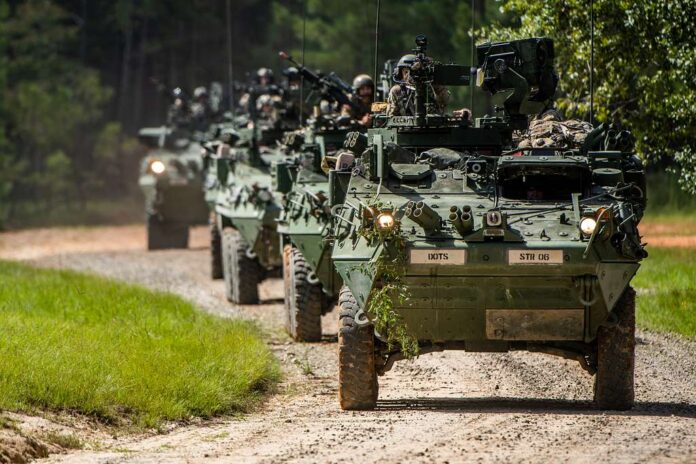In a significant milestone for U.S.-India defence collaboration, the United States approved technology transfers allowing India to manufacture advanced Stryker combat vehicles domestically. This move, poised to bolster India’s defence capabilities, marks a deepening of strategic ties between the two nations. Notably, it positions India as the first global producer of state-of-the-art armoured vehicles outside the U.S.
India and the U.S. once charted separate paths in defence and security, but shared concerns over regional stability forged an unlikely bond. The turning point came in 2016 when India was named a Major Defence Partner, giving access to advanced technologies. India has not traditionally imported combat vehicles, such as tanks or infantry fighting vehicles, from the United States. Instead, India has relied on domestic production and imports from other countries, particularly Russia, for such platforms. For example, India uses Russian-origin tanks like the T-72 and T-90 and is developing its indigenous Arjun Main Battle Tank.
However, India’s defence imports from the U.S. have largely focused on aircraft, helicopters, and maritime systems, including platforms like the Apache attack helicopter and the Chinook heavy-lift helicopter. Recent developments, such as the agreement to co-produce Stryker combat vehicles in India, represent a shift toward collaboration in the combat vehicle segment, with India poised to become the first global producer of these advanced systems outside the U.S.
With agreements on logistics, intelligence, and cybersecurity, the partnership transcends mere trade — becoming a tale of two democracies uniting to shape a secure and rule-based Indo-Pacific future.
The partnership extends beyond Strykers. In a separate agreement, Ultra Maritime, a U.S.-based firm, will collaborate with India’s Bharat Dynamics Limited (BDL) to produce sonobuoys, critical devices for submarine tracking. The joint effort signals a growing alignment in defence technologies between the countries.
During his visit to India, U.S. National Security Advisor Jake Sullivan highlighted the strategic importance of these deals, underscoring India’s new role as a leading producer of advanced munitions and cutting-edge maritime systems.
India’s Ministry of Defence has outlined a phased approach for the Stryker program, beginning with limited off-the-shelf purchases through the Foreign Military Sales route, followed by joint production within India. The collaboration is expected to catalyze India’s defence industry, paving the way for the development of future armoured vehicle systems and enhancing its export potential.
This groundbreaking partnership underscores the strengthening of defence cooperation between Washington and New Delhi, setting a precedent for future joint endeavours in advanced military technology.
Stryker Combat Vehicles
The Stryker, an eight-wheeled armoured fighting vehicle developed by General Dynamics Land Systems-Canada (GDLS-C), is manufactured in London, Ontario, for the United States Army and will now be manufactured in India too. This vehicle features four-wheel drive with an option to switch to all-wheel drive for enhanced manoeuvrability.
Available in multiple configurations, such as Infantry Carrier Vehicles, Mobile Gun Systems, medical evacuation units, and reconnaissance variants, the Stryker offers the Indian Army a versatile platform tailored to diverse operational demands.
Powered by a Caterpillar C7 engine, the Stryker boasts a range of 483 kilometres and a top speed of 100 km/h. Its advanced protection includes bolt-on ceramic armour that shields against improvised explosive devices and artillery fragments, while its high-hardness steel hull provides frontal defence against 14.5 mm rounds. The bolt-on armour further ensures protection against 14.5 mm armour-piercing ammunition.
With a two-person crew and capacity to transport a nine-member infantry squad, the Stryker is designed for rapid deployment in combat and insurgency scenarios, moving faster than tanks on paved roads. Its onboard computer systems enhance battlefield effectiveness, supporting soldiers in engaging the enemy and minimizing risks of friendly fire.
Transportable by Chinook helicopters, which are already part of the Indian Air Force’s fleet, the Stryker is planned for deployment in high-altitude regions along the Indo-China border, including areas like Eastern Ladakh and Sikkim.



